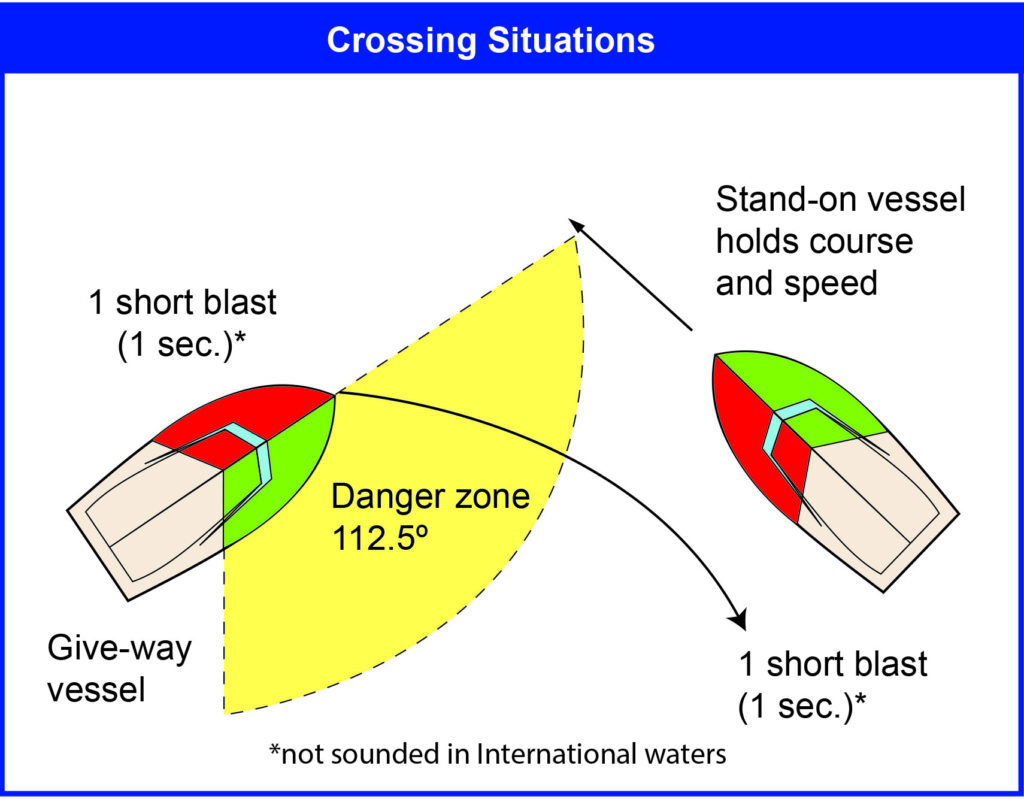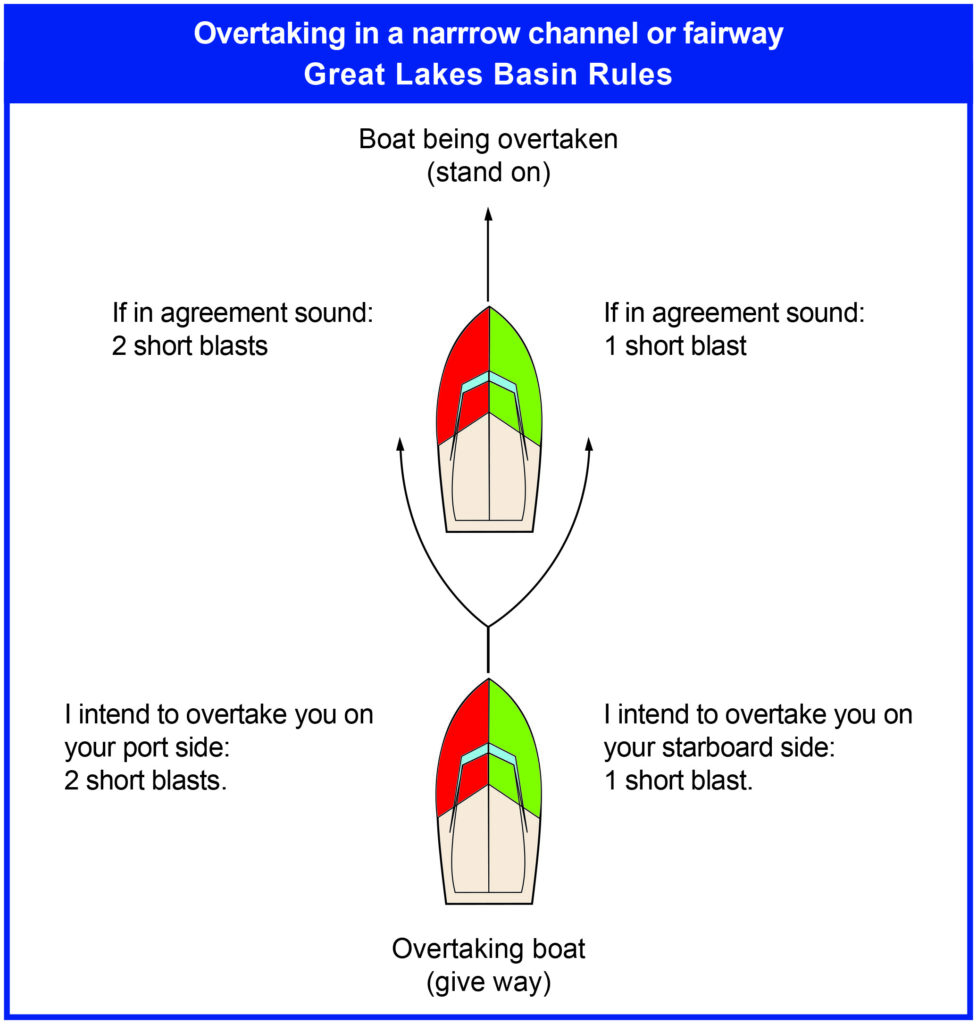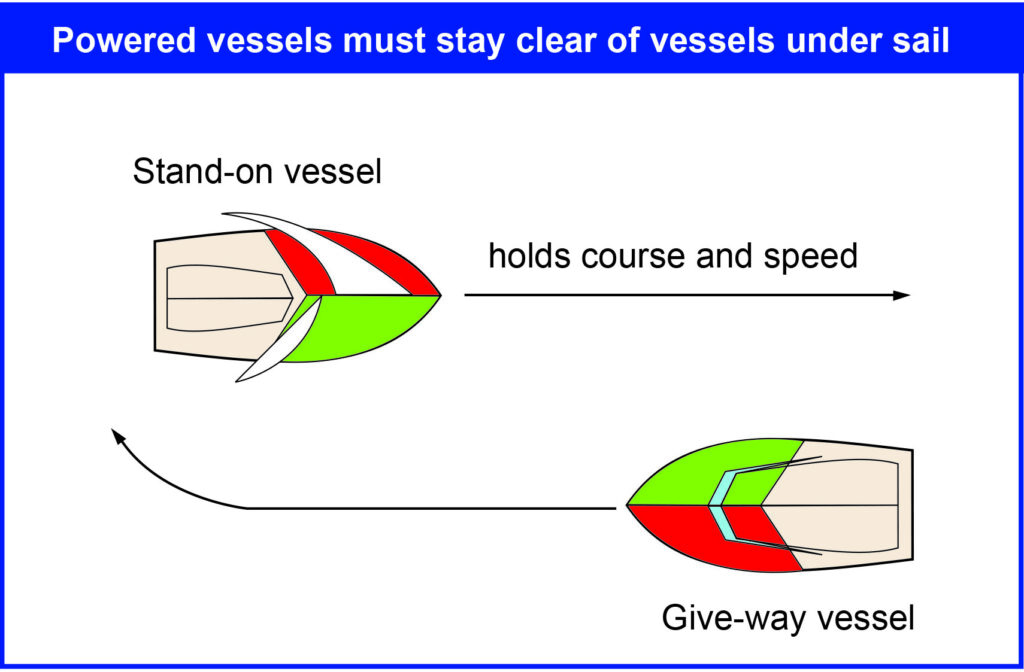Stand-On and Give-Way Vessels –
Who has the Right of Way?
Much of the following has been taken from the latest edition of the CanBoat Boating 1 Boating Basics Handbook. For more information about this and other available courses and seminars go to www.boatingcourses.ca and click on Courses and Seminars. Register today!
Who is the “Stand on Vessel” in various situations is set out by the marine rules of the road as found in the Collision Regulations. A Stand on Vessel technically has the right of way but no right of way is absolute. You only have that right of way when it is safe and possible. All boaters are always responsible for maintaining a lookout and being prepared to take avoiding action should it be required, regardless of who is the Stand On or Give way vessel.
Most marine rules of the road are common sense however, no matter where you do your boating, others have the right to assume that you know what you are doing. When you take control of a boat you are responsible for its operation and your actions. The rules are designed to avoid collisions on the water and must be obeyed. They are simple to understand provided that the nautical terminology for “left” and “right” are fully understood.
When facing forward in a boat the left side of the boat is the Port side and the right side is the Starboard side. When viewing navigation lights, the red light is seen on the Port side from dead ahead to just behind the Port beam. The green light is seen from the same arc on the starboard side.
A simple memory aid: All the short words go together – left, port, red and all the long words do the same – right, starboard and green.

In the above graphic the arc displaying the red light shows an approaching vessel that you are the Stand-On vessel and have the right of way. The other boat is the Give-Way vessel and must keep clear of your boat. The green arc informs another boat that it is the Stand on vessel and has the right of way so you must take appropriate precautions. For this reason, the green arc is known as the danger zone.
The figures in this article also indicate the required sound signals used to communicate your maneuvering intentions and alert others of your presence in reduced visibility or emergencies.
Because they are less maneuverable, sailboats and manually propelled vessels have the right of way over motorized vessels. The only exception is when a sailboat or other manually powered vessel overtakes a motorboat.
Pleasure craft less than 20 meters in length, whether under power or sail, must take early and substantial action to keep clear of commercial vessels engaged in fishing activities. They have limited maneuverability for various reasons including the use of their fishing equipment.
Because they cannot maneuver quickly or easily and because they must have deep water, large deep draft vessels in narrow channels or traffic lanes also have the right of way. You must keep clear of vessels that are less maneuverable by staying as near as possible to the outer limits of the channel on your Starboard side. A vessel not under “command” has no ability to maneuver so must be avoided.
Here are figures that illustrate overtaking, meeting head on and sailing vessels.



One of the primary rules of the road is: To Keep Watch to Avoid Collisions. Keeping a constant watch for others on the water is common sense and the law.
It is a criminal offence to operate a vessel in a dangerous manner like waiting until the last minute to avoid a collision and operating a boat at a to great a speed than required. You must also remember that boats, unlike cars, do not have brakes, they steer from the back and not the front and they need minimum power to maintain good steering control. When you stop power from the engine there is minimum steering available from the rudder, the outboard or outdrive and the boat tends to travel forward in almost a straight line making it difficult to avoid a collision with anything near the front of the boat. So, maintain a good distance to allow for any reduced maneuverability. There is seldom an excuse for a collision. It can almost always be avoided by maintaining distance and keeping a good lookout.
Boating can be fun and safe for the whole family. With basic knowledge and care a boater can avoid trouble instead of trying to get out of it. When operating a boat, you are responsible for the safety of the boat, the safety of your guests and any damage caused by your boat or its wake. Again, others have the right to assume that you know what you are doing.
By John Gullick, CanBoat Manager of Government and Special Programs
Learn more by taking a boating course. View our list of upcoming courses at www.boatingcourses.ca

